Portion size matters
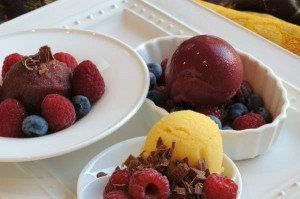 If you use a large serving bowl for dessert you will probably fill it. Does this mean the portion size is right? No. It probably means that the portion is going to be, on average according to our experiments, about three times LARGER than it should be. Over time, excess calories from over-sized portions can really add up.For dessert dishes, it’s time to line up smaller options. Explore your cabinet or nearest dish outlet store. Look for small sauce dishes that can become petit dessert plates. Pictured here are sushi sauce dishes that doubled as dessert plates. We had fun mixing and matching with the dishes, berries, and sorbet flavors.Members can receive a 2 page handout on this recipe and more - click here for more infoHere are the dishes:
If you use a large serving bowl for dessert you will probably fill it. Does this mean the portion size is right? No. It probably means that the portion is going to be, on average according to our experiments, about three times LARGER than it should be. Over time, excess calories from over-sized portions can really add up.For dessert dishes, it’s time to line up smaller options. Explore your cabinet or nearest dish outlet store. Look for small sauce dishes that can become petit dessert plates. Pictured here are sushi sauce dishes that doubled as dessert plates. We had fun mixing and matching with the dishes, berries, and sorbet flavors.Members can receive a 2 page handout on this recipe and more - click here for more infoHere are the dishes: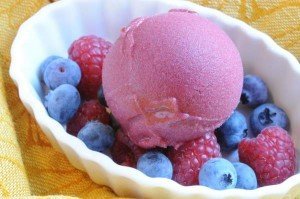 Raspberry sorbet with fresh berries
Raspberry sorbet with fresh berries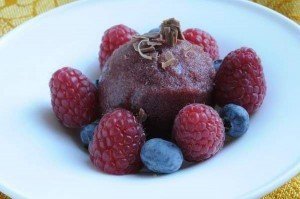 Cabernet Sauvignon sorbet with fresh berries and shaved milk chocolate
Cabernet Sauvignon sorbet with fresh berries and shaved milk chocolate Passion fruit sorbet and fresh raspberries
Passion fruit sorbet and fresh raspberries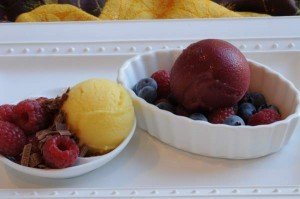 By serving the petite dishes on a small tray you allow the guests to pick and choose the flavors they like and it becomes a fun, gourmet style treat. This grand finale can help any home-cooked meal have a spectacular low-calorie finish that does not cost a lot. The portion control for the small container of sorbet helps us get many servings rather than a few big bowls.
By serving the petite dishes on a small tray you allow the guests to pick and choose the flavors they like and it becomes a fun, gourmet style treat. This grand finale can help any home-cooked meal have a spectacular low-calorie finish that does not cost a lot. The portion control for the small container of sorbet helps us get many servings rather than a few big bowls.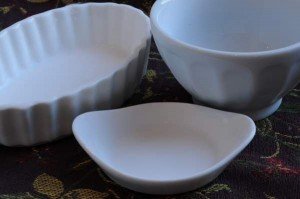 Here are a variety of sauce dishes from our Crate and Barrel Outlet - from the bargain area - I decided to mix and match to make it fun.
Here are a variety of sauce dishes from our Crate and Barrel Outlet - from the bargain area - I decided to mix and match to make it fun.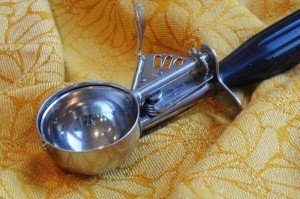 And here is our #30 scoop that is one ounce. If you get used to using this scoop for fat-free ice cream and sorbet you will learn to use less and to judge portion sizes better. It also makes a gorgeous round ball. Our scoop was a little large so the serving size we used is about 1.5 ounces (volume). The package calls for 1/2 cup which is about 4 ounces (volume). We like to use a variety of fruits and we feel this was a fun and attractive way to manage portion control for dessert!Members can receive a 2 page handout on this recipe and more - click here for more info
And here is our #30 scoop that is one ounce. If you get used to using this scoop for fat-free ice cream and sorbet you will learn to use less and to judge portion sizes better. It also makes a gorgeous round ball. Our scoop was a little large so the serving size we used is about 1.5 ounces (volume). The package calls for 1/2 cup which is about 4 ounces (volume). We like to use a variety of fruits and we feel this was a fun and attractive way to manage portion control for dessert!Members can receive a 2 page handout on this recipe and more - click here for more info


